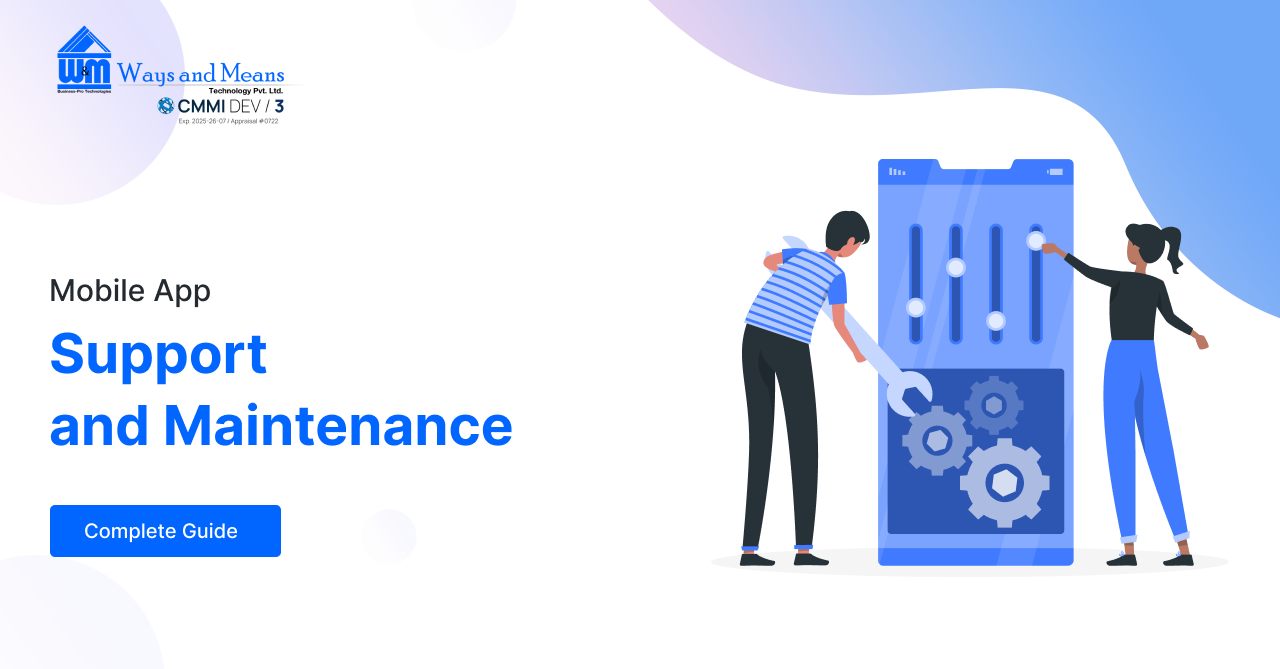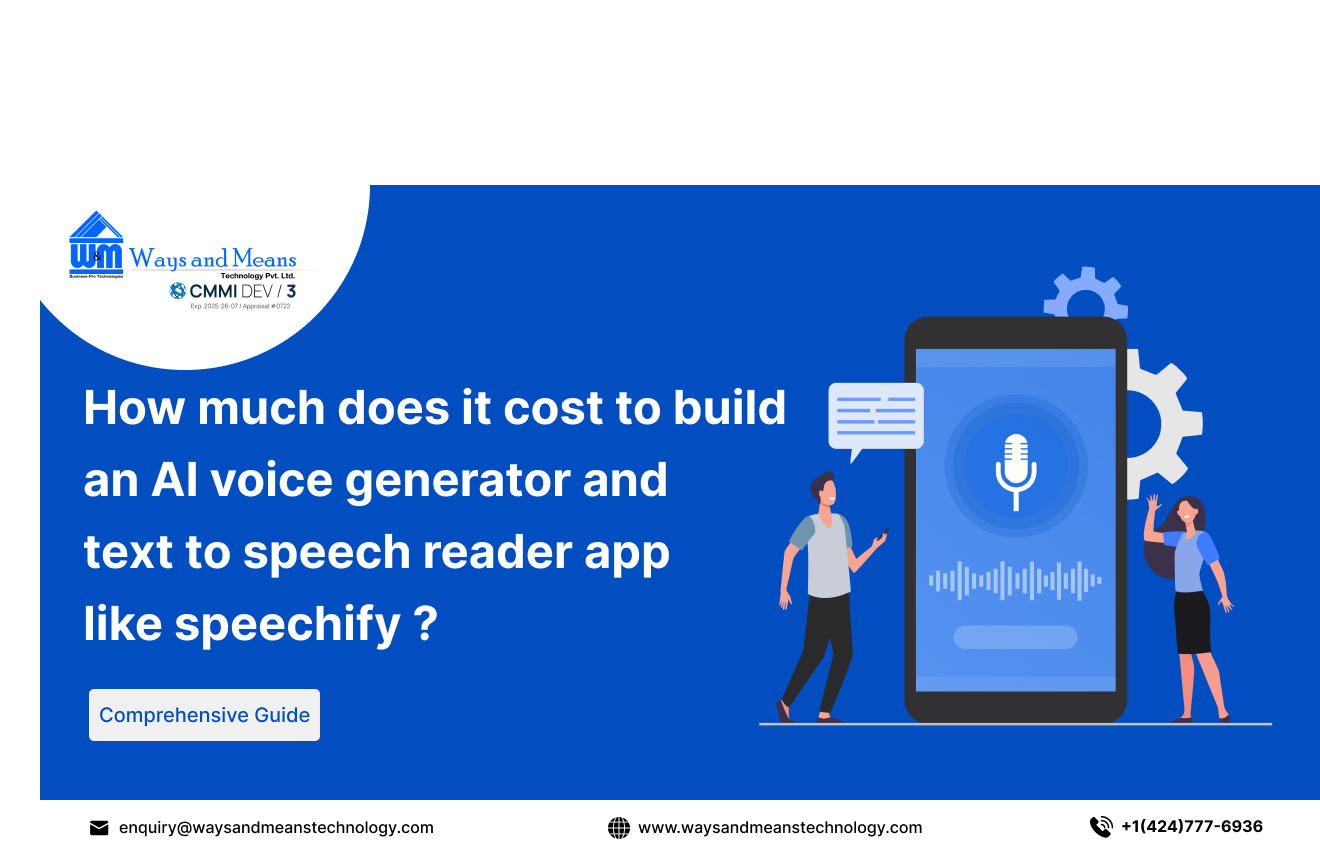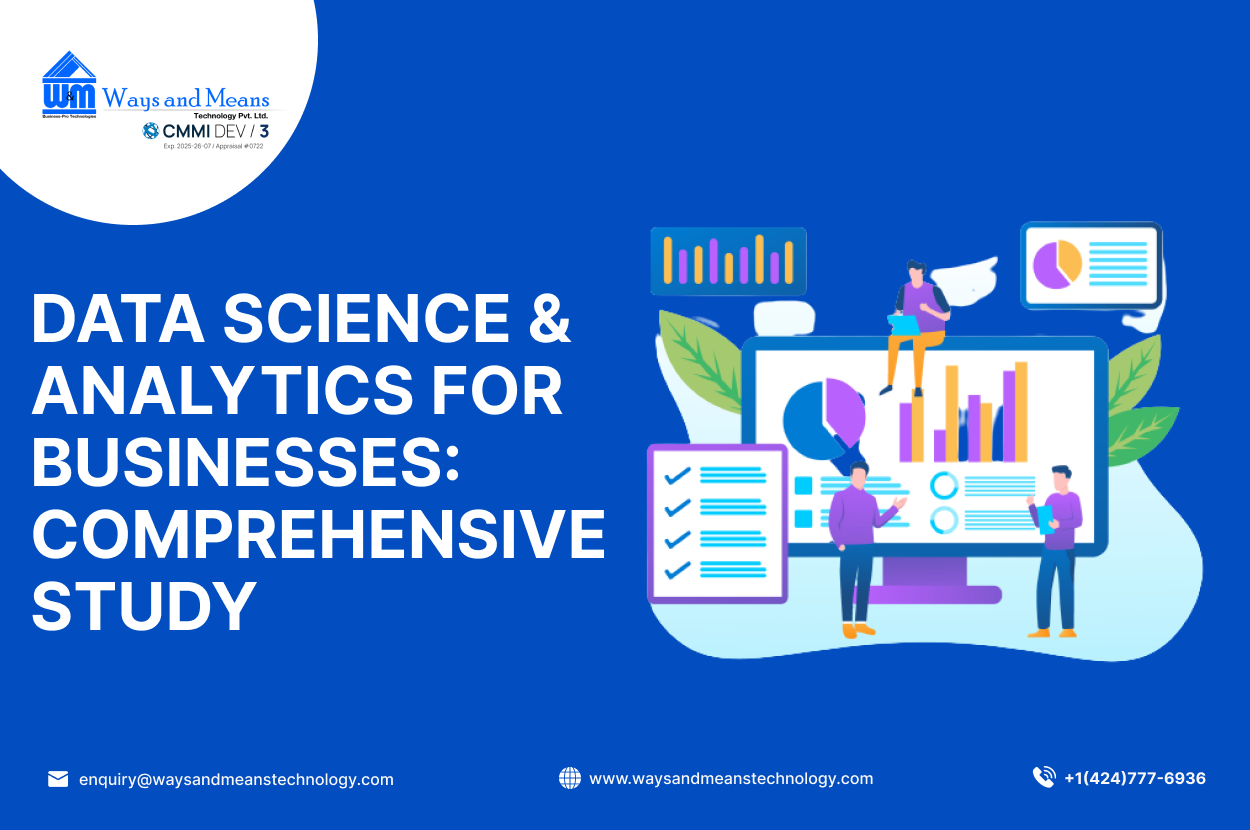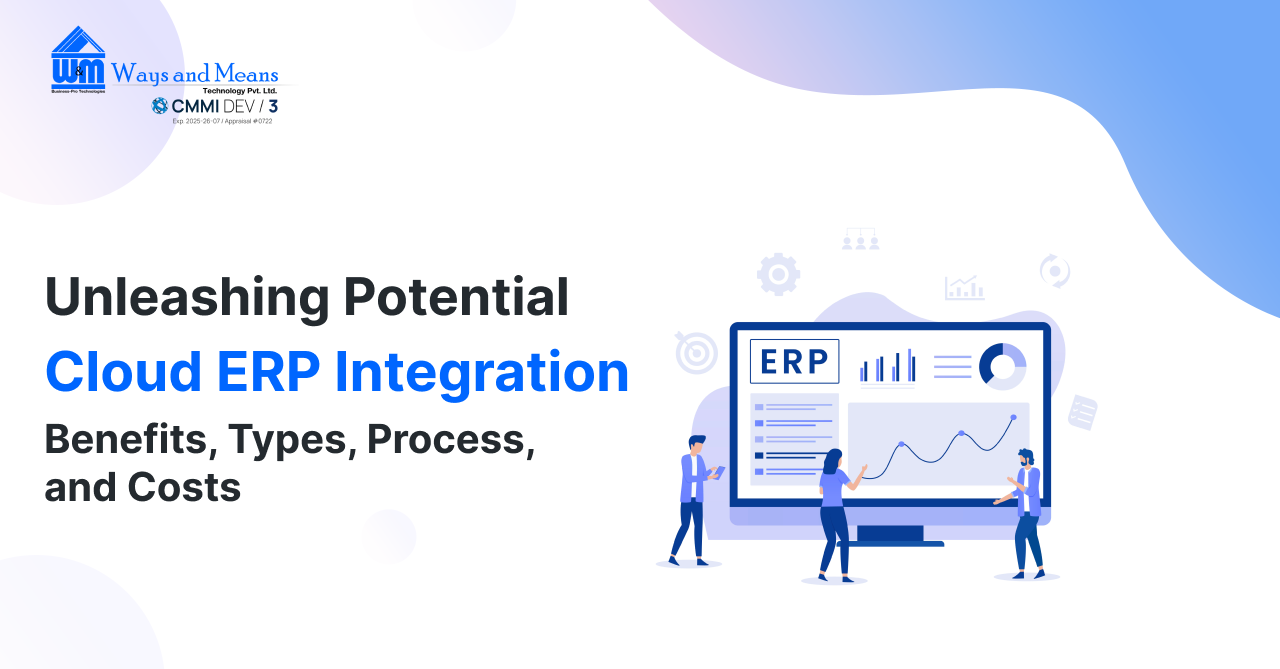Are you prepared for the next phase in the software development lifecycle? Once your app is made available to its users, mobile app maintenance becomes crucial. Not only do you need to keep the app up-and-running, but you also have to ensure its security and appeal to its users. The cost of maintenance will depend on various factors, including your app’s presence on both Google Play and AppStore.
It’s essential to pay attention to app maintenance as it can increase your app retention rates, leading to an increase in profits. According to Mix Panel, even a 5% increase in retention rates can boost company profits between 25 and 95%. So, how can you prepare yourself for the yearly maintenance costs? In this post, we’ll discuss the top factors that influence the app maintenance budget and provide you with a comprehensive list of services that you’ll need to consider.
App maintenance is a recurring and crucial task for every app. Even if you’ve built an amazing app with all the security features, glitches can still occur. Upgrades and modifications may also require maintenance. It’s smart to measure the approximate cost of maintaining your app, just like the development cost. This will help you avoid sudden burdens in case of any unpredictable events.
In today’s world of rushed launches, even the best developers can’t iron out all the bugs by the time an app launches. Maintenance, therefore, becomes one of the most crucial stages of the mobile app development lifecycle. A separate budget just for app maintenance is a smart move.
So, how much does mobile app maintenance cost? Let’s find out.
Why is Mobile application maintenance is important?
Firstly, maintaining an app ensures that it continues to function properly and smoothly over time. This includes fixing bugs and glitches that arise, ensuring compatibility with new operating system updates, and addressing any issues that arise due to changes in device hardware.
Secondly, regular maintenance can help to improve the overall user experience of the app. By fixing bugs and addressing user feedback, you can ensure that the app is user-friendly, intuitive, and enjoyable to use.
Thirdly, regular updates and maintenance can help to keep the app competitive in the marketplace. With new apps being released all the time, it’s important to make sure that your app is up-to-date and meets the changing needs and expectations of your users.
Finally, mobile application maintenance can help to protect the security of the app and the user data it handles. By implementing security updates and staying on top of potential security threats, you can ensure that your app remains secure and trusted by its users.
How much does it cost to maintain an application and keep it running?
Calculating the cost of mobile app maintenance can be a challenging task, as it involves several predictable and unpredictable factors. It is essential to understand the types of maintenance that can influence your costs, such as perfective, adaptive, preventive, and emergency maintenance.
The average annual maintenance cost can be estimated at 15-20% of the entire development cost spent on launching your app’s MVP. However, during the first year after launch, your maintenance cost can be as high as 50% of the initial app development cost, depending on the improvements you introduce in response to users’ feedback.
In addition to the predictable costs of maintaining an app, the cost of hiring a developer or a small app development company can also influence the total cost of maintenance. Your market location, type of technology, and the type of upgrade can also have a significant impact on your maintenance costs.
Finally, the amount spent on your app’s marketing strategy will also be counted as part of your total application maintenance cost. By obtaining top-notch app maintenance services, you can positively impact user retention rates by providing the best possible experience for your users. Therefore, it is always recommended to hire an experienced application maintenance services company to ensure the best possible maintenance and support for your mobile app.
Types of Mobile App Maintenance
Perfective Maintenance:
This type of maintenance is concerned with enhancing the application’s performance by adding new features or improving existing ones. It ensures that the app stays up-to-date with the latest trends and user demands.
Adaptive Maintenance
Adaptive maintenance deals with making changes to the app when the environment changes. Changes can be related to the operating system, hardware, software requirements, database storage, or cloud storage.
Preventive Maintenance
This type of maintenance is all about preventing future issues from occurring by identifying and eliminating their sources. It involves optimizing the app’s code, updating documentation, and restructuring the code to make the app more stable.
Emergency Maintenance
As the name suggests, emergency maintenance is for addressing unexpected and urgent issues that may occur in the app. It involves taking immediate action to fix the problem to ensure uninterrupted app experiences for the users.

What are various difference types of app maintenance related expenses ?
When it comes to app maintenance expenses, there are several factors to consider. Here are some of the most common types of app maintenance expenses:
Bug fixing: As your app gets more complex and your user base grows, it’s almost inevitable that you’ll run into bugs that need to be fixed. Bug fixing expenses can include the cost of developer time, as well as any additional expenses related to identifying and addressing bugs.
Performance optimization: Over time, your app may start to run more slowly or become less responsive. This can be caused by a variety of factors, from inefficient code to increasing user load. Performance optimization expenses can include the cost of developer time, as well as any additional expenses related to identifying and addressing performance issues.
Security updates: As new security threats emerge, it’s important to keep your app secure by applying security updates. This can include expenses related to patching vulnerabilities, updating security protocols, and ensuring that user data is protected.
Compatibility updates: As mobile devices and operating systems continue to evolve, it’s important to ensure that your app remains compatible with the latest devices and software updates. This can include expenses related to updating your app’s code to work with the latest operating system versions, as well as testing your app on different devices to ensure that it works properly.
Content updates: To keep your app fresh and engaging, you may need to update its content from time to time. This can include expenses related to creating new content, as well as any design or development work needed to incorporate the new content into your app.
Infrastructure and hosting costs: To keep your app running smoothly, you’ll need to invest in the infrastructure and hosting needed to support it. This can include expenses related to cloud hosting, server maintenance, and other infrastructure costs.
Overall, the specific types of app maintenance expenses you’ll encounter will depend on the nature of your app, as well as the size and complexity of your user base. However, by understanding the most common types of app maintenance expenses, you can better plan for the costs associated with keeping your app running smoothly over the long term.
What are best practices for mobile app maintenance ?
- Continuously monitor the app: It is important to continuously monitor the app to ensure that it is working as intended. This includes monitoring for any bugs, crashes, and other issues that may arise.
- Keep the app up to date: Keeping the app up to date is critical to ensuring that it continues to function properly. This includes updating the app to support new operating system releases, security patches, and other updates that may be necessary.
- Regularly test the app: Regularly testing the app is important to identify any potential issues before they become major problems. This includes both functional and non-functional testing to ensure that the app works as intended.
- Optimize app performance: Optimizing app performance is critical to ensuring that the app runs smoothly and efficiently. This includes optimizing the app’s code, reducing memory usage, and minimizing battery drain.
- Implement user feedback: Listening to user feedback and implementing it in the app can help to improve the app’s functionality and user experience. This includes adding new features, fixing bugs, and making other improvements based on user feedback.
- Backup and restore data: Backing up and restoring data is important to ensure that user data is not lost in case of any issues or crashes. This includes regularly backing up the app’s data and providing users with a way to restore their data if necessary.
- Have a disaster recovery plan: Having a disaster recovery plan in place can help to minimize the impact of any major issues or crashes. This includes having a plan for how to quickly restore the app to a functional state in case of any major issues or crashes.
How can you leverage technology in maintaining your mobile app?
Maintaining a mobile app is a complex and challenging task that requires careful planning, execution, and monitoring. Fortunately, technology has evolved to the point where it can significantly streamline the maintenance process and make it more efficient and effective. Here are some ways in which technology can help you maintain your app:
- Automated testing: One of the most critical aspects of app maintenance is testing to ensure that the app is functioning correctly. Automated testing tools can help detect issues and bugs in the app, making it easier to fix them quickly. Automated testing tools can help to verify that app updates or new features are working correctly and without any bugs.
- Monitoring tools: Real-time monitoring can help you identify performance issues or crashes as they happen, allowing you to quickly fix them before they escalate into bigger problems. By using monitoring tools, you can monitor the performance of your app and ensure that it runs smoothly and effectively.
- Analytics tools: Analytics tools can help you track user behavior, identify issues with the app, and gather feedback on the app’s functionality. By analyzing user data, you can make informed decisions about which features to add or remove, and how to optimize the app’s performance.
- Cloud-based services: Cloud-based services can help you to store app data securely, which can help you to restore your app to its previous state if it experiences any issues. Cloud-based services also offer benefits such as automatic backups, faster data access, and reduced costs.
- Version control systems: Version control systems can help you manage and track changes made to the app’s code, which can help you to identify the source of issues or errors. Version control systems can also help you to collaborate more effectively with other developers and ensure that everyone is working on the latest version of the app.
- App performance optimization: App performance is a critical factor that determines the user experience. Performance optimization tools can help you to identify and fix performance issues such as slow loading times, which can lead to high app abandonment rates. These tools can help you to optimize the app’s performance and ensure that it runs smoothly and quickly.
- Chatbots: Chatbots can be used to communicate with users, answer their questions, and provide support. Chatbots can help to reduce the workload of the support team, while ensuring that users receive prompt and accurate responses to their queries. They can also help to collect feedback and suggestions from users, which can be used to improve the app.
In conclusion, technology can be a valuable asset in maintaining your mobile app. By using automated testing, monitoring tools, analytics tools, cloud-based services, version control systems, app performance optimization, and chatbots, you can ensure that your app is functioning correctly and delivering an excellent user experience. By leveraging these tools and techniques, you can optimize your app’s performance, reduce maintenance costs, and improve user retention rates.
Looking for a reliable and experienced partner for your mobile app maintenance? Look no further than Ways and Means Technology! Our team of experts is dedicated to ensuring your mobile app is running smoothly and effectively, providing high-quality maintenance services tailored to your specific needs.
At Ways and Means Technology, we understand the importance of keeping your app updated and functional. Our team offers a range of maintenance services, including perfective, adaptive, preventive, and emergency maintenance, as well as bug fixing, code optimization, and more. With our help, you can be sure your app is always up-to-date, reliable, and user-friendly.
So why choose Ways and Means Technology for your mobile app maintenance project? Our team brings years of experience to the table, as well as a commitment to quality, communication, and transparency. We work closely with you to understand your specific needs, and we are always available to answer your questions and address your concerns.
Our goal is to provide you with the best possible maintenance services, so you can focus on growing your business and delighting your users. Don’t let app maintenance become a headache – let Ways and Means Technology handle it for you! Contact us today to learn more about our services and how we can help you maintain your mobile app.
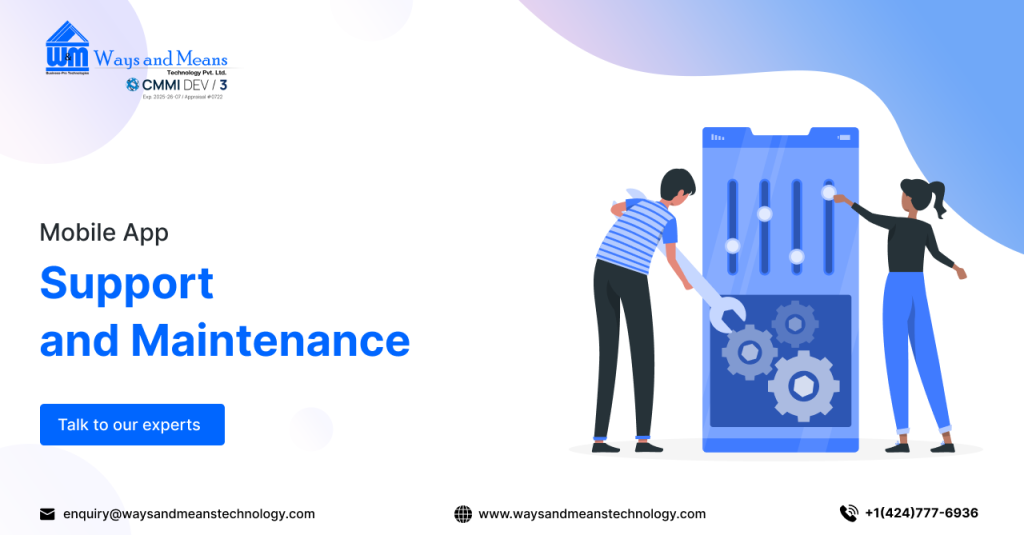
Frequently Asked Questions
How much it will cost to maintain my mobile app?
The cost of maintaining a mobile app depends on a number of factors such as the type of maintenance required, the complexity of the app, and the size of the development team. We can provide you with a customized quote after understanding your specific needs.
How often should I get my mobile app maintained?
The frequency of mobile app maintenance depends on the type of maintenance required, the number of users, and the app’s usage. Generally, we recommend regular maintenance checks to ensure that the app runs smoothly, and any issues are fixed promptly. We can work with you to create a maintenance schedule that best suits your needs.
What kind of maintenance services do you offer?
At Ways and Means Technology, we offer a range of mobile app maintenance services such as bug fixing, feature enhancements, app optimization, and security updates. We can also provide you with a dedicated team to work on your project, depending on your requirements.
Can I expect regular updates from your team regarding the maintenance work?
Absolutely! We believe in transparent communication and provide regular updates to our clients regarding the progress of the maintenance work. We also ensure that you are kept in the loop regarding any issues that may arise during the maintenance process.
Why should I choose Ways and Means Technology for my mobile app maintenance project?
At Ways and Means Technology, we have a team of experienced developers and maintenance experts who are well-versed in the latest industry trends and best practices. We have a proven track record of delivering high-quality maintenance services to our clients, and we are committed to providing exceptional customer service. We understand that every app is unique, and we work closely with our clients to ensure that their specific needs are met.
